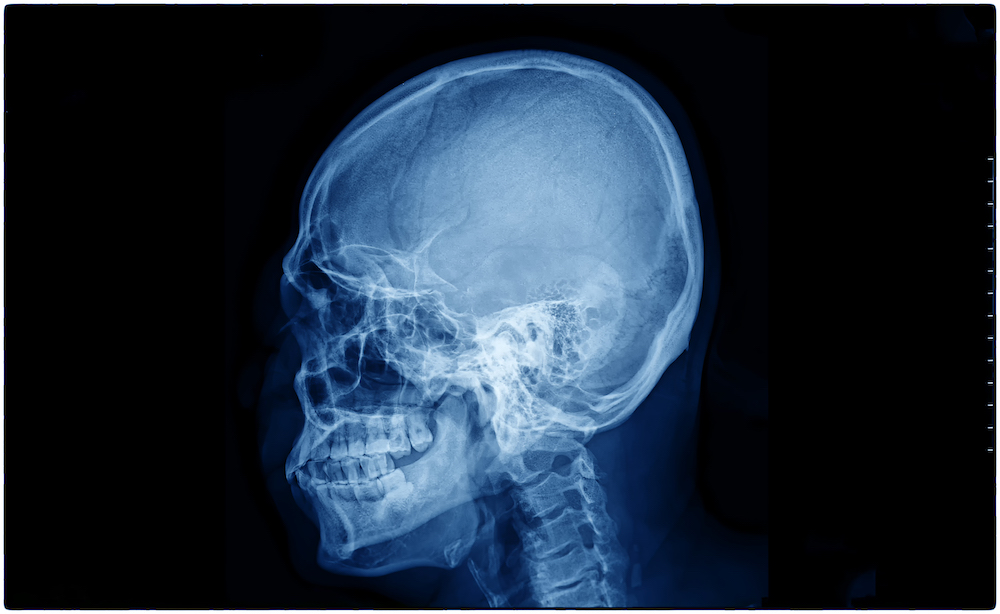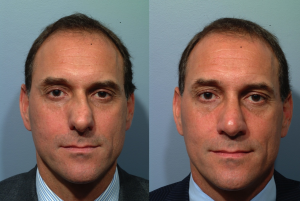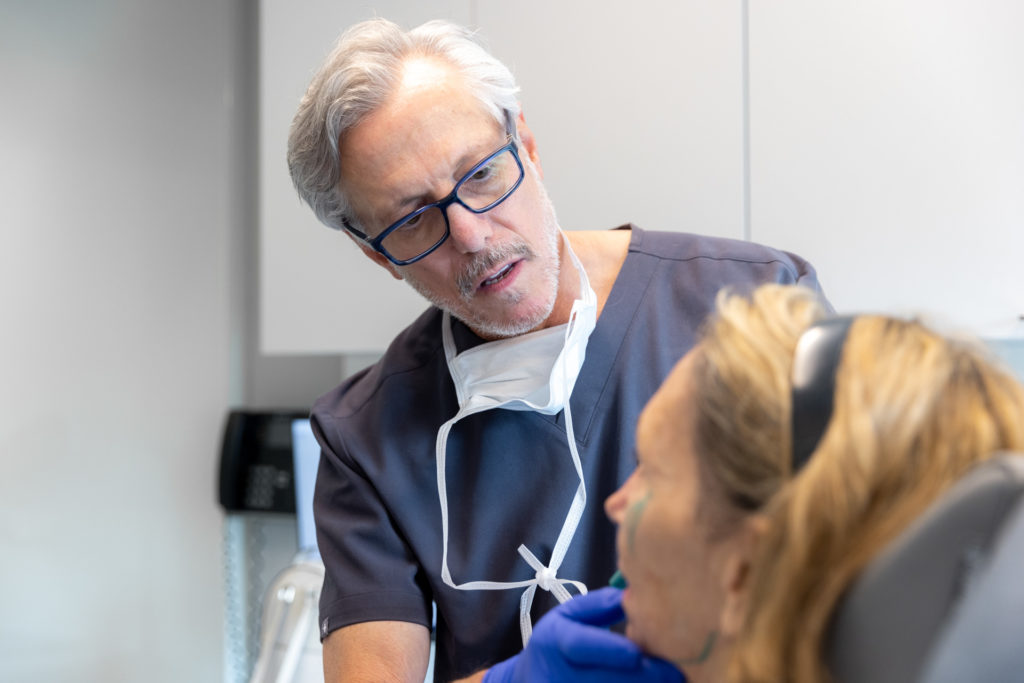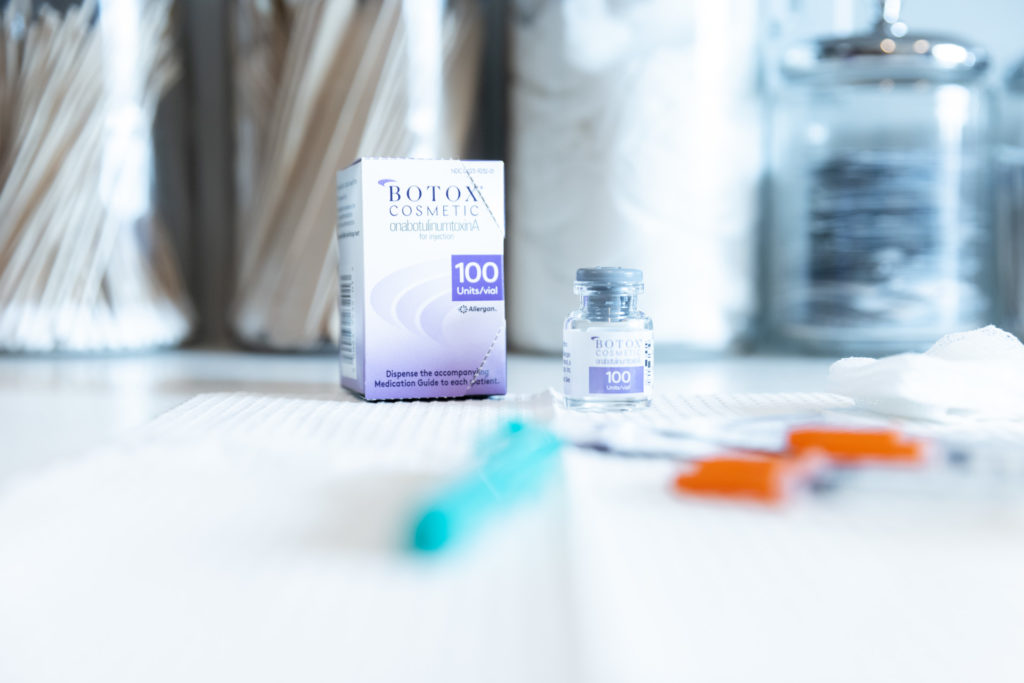
A BROKEN NOSE: ONE OF THE MOST COMMON SPORTS INJURIES
Participating in sports can be rewarding and exhilarating, but it is not without risks. Because of flying elbows and sticks in many sports, sports injuries are all too common. Nasal fractures are the most commonly injured facial bones. A broken nose is especially likely among participants in baseball, basketball, soccer, and boxing. Without attentive care, a nasal fracture can result in permanent disfigurement of the nose and even breathing issues. Fortunately, Dr. Pearlman can perform either what is called a closed reduction soon after trauma or, if delayed, a rhinoplasty to improve a nose that was damaged by a sports injury.
WHAT TO DO AFTER A SPORTS INJURY TO THE NOSE
A sports injury to the nose can occur when an athlete is hit in the face by an opponent, ball, stick, or another piece of sporting equipment. The first thing to do is check whether a serious head injury took place. While monitoring the condition of the nose, it should be determined whether a concussion, neck injury, or brain injury may have occurred. If so, emergency medical services should be contacted immediately. If emergency medical services are not needed, initial steps should include stopping the bleeding with pressure on the nostrils and applying ice to minimize swelling in the nose and eye area.
The athlete should visually inspect his or her nose to determine if there is any sign of misalignment that was not previously there, such as a crooked bridge, flattened bridge, or asymmetry. Increased difficulty breathing through the nose can also indicate a fracture, which may obstruct the nasal airways. A fractured nose will likely begin to swell and bruise, and the athlete should go to a local hospital or walk-in clinic for an evaluation and X-rays. If the swelling is not yet severe, a facial plastic surgeon or ENT specialist may reset the fracture immediately after the injury. It is very important that someone evaluates the inside of your nose to make sure you don’t have a collection of blood inside, called a hematoma. Hematoma is the only true urgent reason to see a specialist right away.
WHEN IS NOSE SURGERY RECOMMENDED?

If a broken nose is not reset immediately after the injury, swelling will ensue. Unfortunately, this is the likely situation. Sometimes, it is prudent to wait several days for the swelling to reduce to actually be able to tell how crooked the nose really is. However, if you wait more than two weeks, the bones start to set and can no longer be manipulated with a simple closed reduction. So, the sweet spot is between a few days and a week and a half.
A fractured nose that is very badly displaced, was never reset, or heals poorly despite being reset can be corrected with rhinoplasty. Rhinoplasty can reshape the nose to reverse the effects of the break on the outward appearance and nasal breathing. Under the hands of a skilled rhinoplasty surgeon, the athlete can expect natural-looking results that mask the evidence of there ever having been a sports injury to the nose. If there is a concurrent deviated septum from the trauma, cartilage heals differently than bones. We recommend waiting at least six to eight weeks for the cartilage to fully heal before performing septoplasty after trauma. If desired, athletes can make the most of the experience by asking the surgeon to correct other nasal defects, such as a bulbous tip, large nostrils, or a bump along the bridge. After rhinoplasty, instead of being permanently crooked or deformed by the injury, the nose will be able to heal properly and retain a natural, aesthetically pleasing appearance.
WHEN CAN I PLAY SPORTS AGAIN?
Because the nose will be especially sensitive and vulnerable after being broken and undergoing surgery, it is usually best to take six to eight weeks off from contact sports and three weeks off from strenuous physical activity. Athletes should be careful not to return to sports too early, or they risk damaging their nose further and compromising their surgical results. If an early return to physical activity is requisite, most physicians will require a face guard or protective splint for at least six weeks to protect the nose as it heals. As athletes comply with this directive, they can expect full healing of a broken nose and look forward to having an entirely natural nasal appearance after a sports injury.
Dr. Pearlman is a recognized expert in rhinoplasty, revision rhinoplasty, and septoplasty. For nasal surgery and correction of a broken nose, you should trust your face to a facial plastic surgeon.




